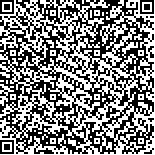| 摘要: |
| [摘要] 目的 探讨胆道镜直视下微波治疗胆管壁病变的效果。方法 在胆道镜直视下对胆管壁病变71例(包括胆管狭窄、胆管息肉、胆管息肉样病变、胆管壁肿瘤)进行微波治疗:(1)对胆管狭窄采用微波功率50~90 W,多点多次放射状凝灼、切开,使膜样增生的组织炭化或汽化,狭窄口扩大;(2)胆管息肉、胆管息肉样病变及胆管肿瘤先取活检,采用功率90~110 W,直视下将辐射头插入病变实质内,使病变局部发白炭化。结果 (1)胆管狭窄微波治疗33例次37处,治疗后胆管狭窄均有好转,原有嵌顿的结石被清除;T管造影检查,原不显影的胆管分支显影良好或较前改善。(2)胆管息肉及息肉样病变、胆管壁肿瘤44例次47处,经微波治疗后,所有胆管壁病变均消失或基本消失。胆道镜复查或影像学检查未见复发。(3)所有病例术后无明显出血、穿孔等并发症发生。胆道镜无损坏,图像显示仍良好。结论 应用微波技术经胆道镜直视下微波治疗胆管壁病变,充分利用了微波技术和胆道镜技术两者的优势,扩大了胆道镜技术与微波技术的应用范畴,且操作安全、疗效确切,值得临床推广。 |
| 关键词: 胆道镜 微波技术 胆管狭窄 胆管息肉 胆管肿瘤 |
| DOI:10.3969/j.issn.1674-3806.2014.04.14 |
| 分类号:R 657.4 |
| 基金项目: |
|
| Application of microwave technique under choledochoscope for treatment of bile duct wall diseases: report of 71 cases |
|
MA Li-lin, ZHU Jian-wei, WANG Wei, et al.
|
|
Department of General Surgery, the Affiliated Hospital of Nantong University, Jiangsu 226001,China
|
| Abstract: |
| [Abstract] Objective To explore the effect of microwave technique under choledochoscope for treatment of bile duct wall diseases.Methods Seventy-one patients with bile duct wall disease(bile duct stricture, bile duct polypi, polypus-like pathological changes of bile duct, bile duct tumor) were treated with microwave technique under choledochoscope. The power of microwave for treatment of bile duct stricture was 50~90 W. The stricture sites were enlarged by multi-points coagulation and rad cauterization to char or gasify the membrane-like hyperplastic tissues. For treatment of bile duct polypi, polypus-like pathological changes of bile duct and bile duct tumor which first underwent biopsies to rule out cancerization, the power of microwave was generally 90~110 W. During the operation, the radiation head was usually inserted into polypi foci to make local tissue white-looking and charring then.Results Totally 37 sites in 33 cases of bile duct stricture and 47 sites in 44 cases of bile duct polypi, polypoid lesions of bile duct and bile duct tumor underwent microwave treatment in choledochoscopic examination. The bile duct strictures took a favorable turn and the retained stones were removed as a result, which were verified by T-tube visualization to show an improved image of bile duct tree. In addition, the polypi foci disappeared gradually. No complication like bleeding or perforation occurred during the treatment in all the patients, and the choledochoscope was intact after use, keeping a fine condition as before.Conclusion The microwave technique under choledochoscope for treatment of bile duct disease brings into full play of the both and expands the application of the both, thus it is a novel, safe and effective technique, which is valuable for generalization. |
| Key words: Choledochoscope Microwave technique Bile duct stricture Bile duct polypi Bile duct tumor |

